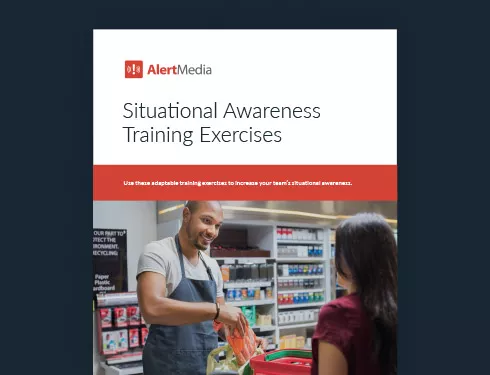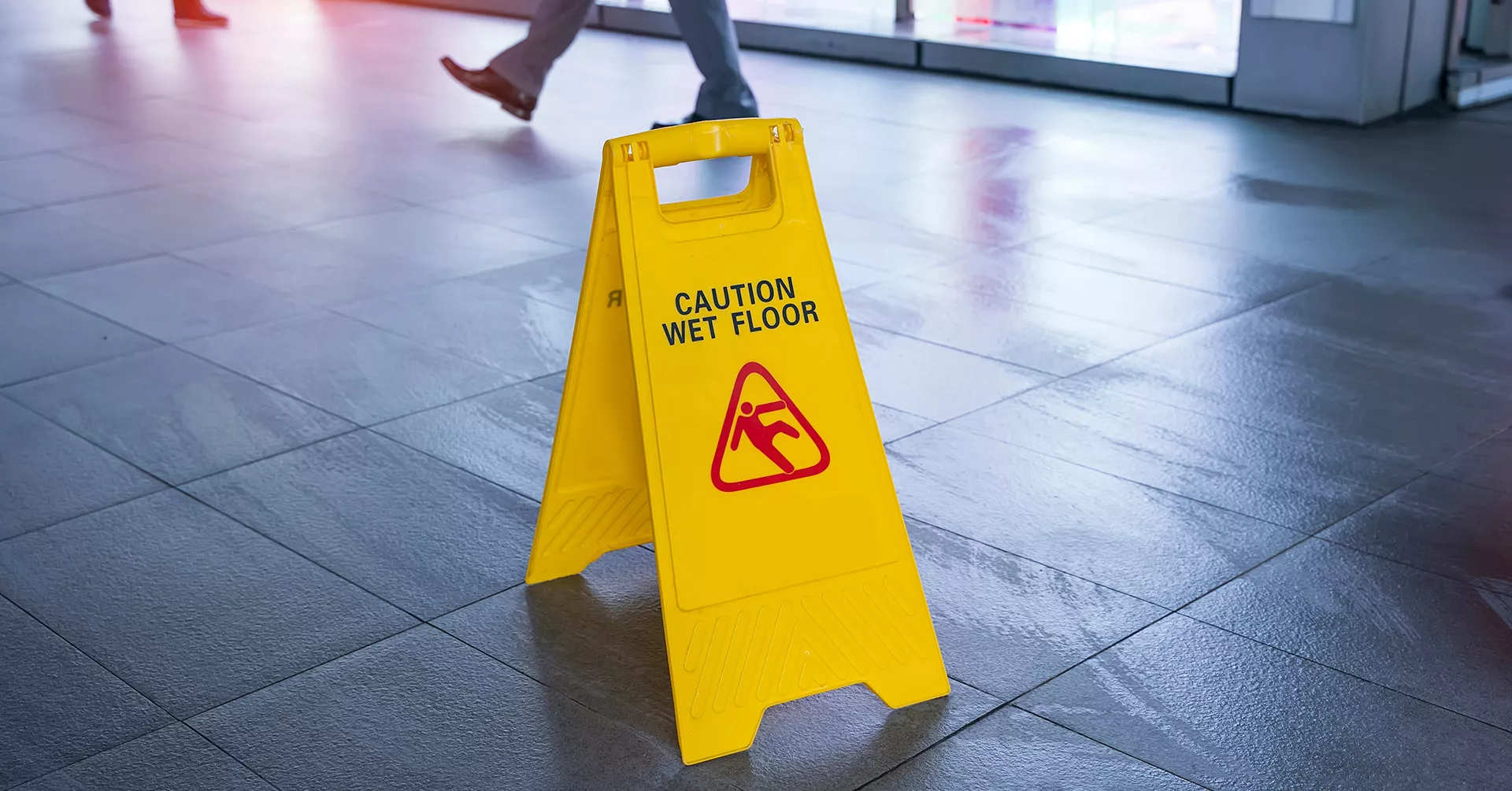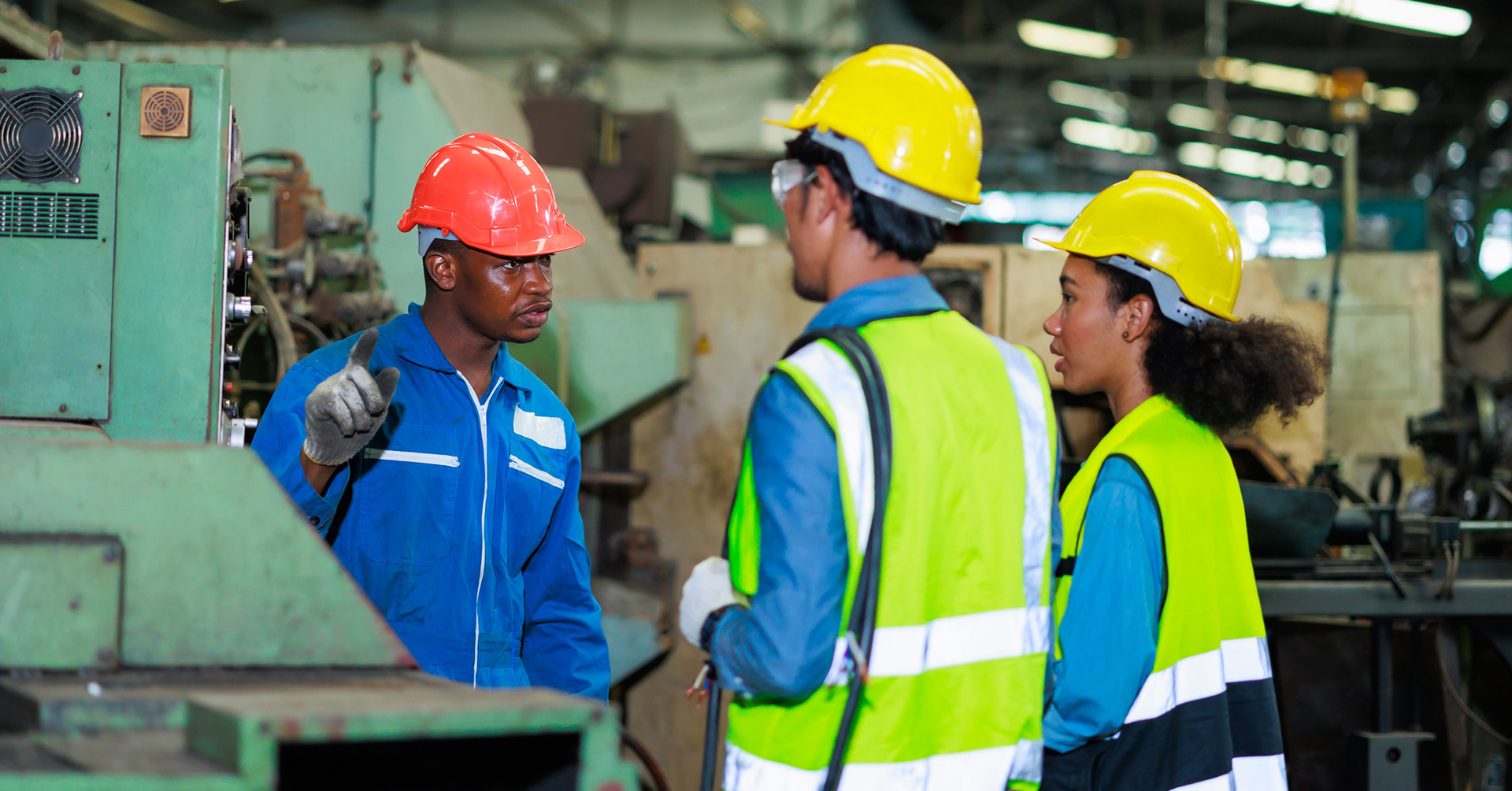
Situational Awareness in the Workplace: How to Inspire Employee Vigilance
Situationally aware employees are more likely to notice workplace risks before they become hazardous situations. Learn how to support your employees in cultivating situational awareness.

No matter where you are or what you’re doing, it pays to be vigilant. The benefit of situational awareness is to be more likely to spot hazards and counteract them.
- Walking in a busy parking lot? Be alert for drivers backing out of spots without looking.
- Making dinner in the kitchen? Remember which burners are hot so you don’t hurt yourself.
- Navigating a crowded subway station? Hold on to your valuables and be wary of pickpockets.
Chances are you already employ this skill set on a regular basis—often unconsciously because, as humans, we are naturally wary of our surroundings. These practices are uniquely important in the workplace due to occupational, industry-specific, and locational hazards. Preparing employees with situational awareness skills is integral to safety management and fulfilling your duty of care, to protect workers from harm.
In this post, we’ll show you how to train your workforce to sharpen their situational awareness in order to maintain a safer work environment and improve emergency preparedness.
Download Our Situational Awareness Training Exercises
How to Identify Hazards in the Workplace
Situational awareness positions an individual to make careful, safe decisions when faced with a potentially unsafe scenario. To achieve this, they must first identify the hazards that might arise.
The most comprehensive way to do this is by undergoing a threat assessment, also known as a risk assessment. Typically, these are exercises performed at the business level, and they uncover the occupational safety hazards and issues that could put the organization at risk. Beyond identifying these risks, you then determine the relative likelihood and impact of each emergency situation so you can direct your efforts efficiently toward preparation and prevention.
While you might not be able to list every potential hazard, you can identify the ones that loom largest and occur most frequently. Enlist leaders and team members throughout the company so you can lean on their experience and insights related to internal and external risks.
Situational awareness is the practice of actively monitoring your surroundings in the workplace so you can identify threats before they occur and have time to react.
The types of problems you might come across in your daily life are likely to differ from the ones that could occur at work, so it’s important that you remain in the appropriate mindset depending on your location and present occupation.
Examples of workplace hazards
The specific hazards that your workforce faces may be unique from those of other organizations. But we can look at some of the most common workplace risks to consider:
- Fire — Fires result in hundreds of billions of dollars of damage to businesses every year, and their causes are often commonplace and preventable. Situational awareness in the workplace can help you spot factors that increase the risk of fire, such as faulty wiring or poorly maintained kitchen appliances, so you can address the risk before it’s too late.
- Slips, trips, and falls — Whether at a construction site, a grocery store, or an office building, there are a multitude of ways someone can fall and injure themself. Be it wet floors, working at heights without PPE, or tripping hazards in work areas—workers need to be cognizant of fall risks at all times and work to prevent accidents.
- Chemical exposure — Many professions require workers to be in close proximity to various noxious substances, such as supplies involved in cleaning, maintenance, and manufacturing. Without proper precautions and workplace situational awareness, employees are liable to suffer skin damage, eye damage, or even poisoning.
- Workplace violence — It’s a sad truth that threats of violence, such as active shooters, are a risk every business should consider. These attacks often have precursors, such as speaking about weapons and violence, and the situationally aware may help to prevent potential threats.
- Cyber danger — Cybersecurity risks involve all information technology and equipment used by the company. In a matter of moments, bad actors—such as hackers—can infect entire networks with malware and ransomware. The good and bad news is that cyber threats often rely on employee choices. Training to sharpen cyber situational awareness in the workplace can often thwart these attacks entirely.
(function() { var qs, js, q, s, d = document, gi = d.getElementById, ce = d.createElement, gt = d.getElementsByTagName, id = 'soun_der', b = 'https://embed.sounder.fm'; if (!gi.call(d, id)) { js = ce.call(d, 'script'); js.id = id; js.src = b + '/embed.js'; q = gt.call(d, 'script')[0]; q.parentNode.insertBefore(js, q);}})();
How to Improve Employees’ Situational Awareness
Implement situational awareness training
It is not uncommon for employees to focus solely on the task they were hired to do and put blinders on for everything else, especially in new situations. If they see something amiss in an area they are not responsible for, they may think of it as “not my problem” and ignore an opportunity to address a potential hazard. To inspire accountability, make employee training on situational awareness and reasonable action a part of onboarding for every new employee. This is safety training that should be updated and repeated regularly for all team members.
Situational awareness is a skill—and as with any skill, it improves with practice. Guide workers in examining their work environment so they become familiar with taking in their surroundings. Fire drills are one of the most familiar examples of practicing awareness and emergency response plans. During training exercises, introduce unexpected, unfamiliar circumstances to test their attention and adaptability. Review examples of previous incidents—discussing steps that could have prevented or mitigated harm—or near misses that were averted thanks to an employee’s sharp situational awareness skills. Tabletop exercises are great ways to familiarize employees with their role in safety and risk management in specific workplace situations.
Avoid multitasking
It has been scientifically proven that most people are simply incapable of multitasking. The truth is that humans are not built to focus on more than one thing at a time. Multitasking can have serious consequences for decision-making and situational awareness in the workplace.
We’ve all been in a position where we had to juggle multiple tasks at once, and the quality of our efforts suffered as a result. The same applies to situational awareness. If a worker has to worry about overseeing the production line, answering the phone, and receiving deliveries—not only are they likely to handle each of these tasks sub-optimally, but they’re also likely to miss issues that arise around them.
To avoid this risky overload, make sure your teams are adequately staffed and responsibilities are delegated in such a way that people can focus on one task at a time. A balanced task load frees employees’ attention to take notice of what’s going on around them and avert safety violations and accidents.
Limit distractions
Similar to how multitasking can undermine situational awareness, distractions can too. Distractions in the workplace are stimuli that detract from an employee’s ability to do their job. These can include loud or irritating noises, harsh or flashing lights, other workers, and other burdens on their attention.
Distractions not only reduce workers’ productivity but also prevent them from being situationally aware because they may need to ignore or “tune out” their surroundings to compensate for the productivity strain. Seek employee feedback on this matter: If your people are regularly experiencing distractions, commit to limiting these disruptions wherever possible or providing support to help them compensate without compromising their risk awareness.

See something, say something
If you’ve passed through an airport or taken a subway train in the United States over the past two decades, you’ve probably noticed signage with slogans to the effect of, “see something, say something.” These reminders are encouraging situational awareness among passengers and giving them the confidence to call attention to behavior they find suspicious. The same principle can be applied to workplaces.
It’s natural for many of us to avoid confrontation and mind our own business. But at work, personal safety and business continuity are at risk. By instilling responsibility and accountability in all employees, you are cultivating a positive safety culture, which has even broader, lasting benefits for your organization’s resilience. If your workers, leaders, and policies encourage and reward employees for speaking up when they notice something amiss, your organization’s collective level of situational awareness will continue to grow and strengthen over time.
Allow for proper rest
According to the Mayo Clinic, adults need at least 7 hours of sleep per night. If they receive less, their cognitive functions decline; and if they continuously get too little, a sleep deficit can accumulate, further damaging an employee’s ability to think and act safely.
While you can’t oversee employees’ sleep schedules, you can ensure that their work schedules do not prevent healthy sleeping habits. You can also ensure that workers are taking regular breaks during the workday for brief physical and mental rest to help them stay sharp. Some companies even encourage naps during the workday to increase productivity and physical health.
Final Thoughts
Situational awareness in the workplace is a wide-reaching skill that can be taught to all employees with regular opportunities for practice. Not only will it keep your people safe, but it will also make them more effective in their jobs since they’ll be ready and able to notice irregularities that could cause problems. With these tips, you can improve your people’s situational awareness and avoid accidents and slowdowns.




